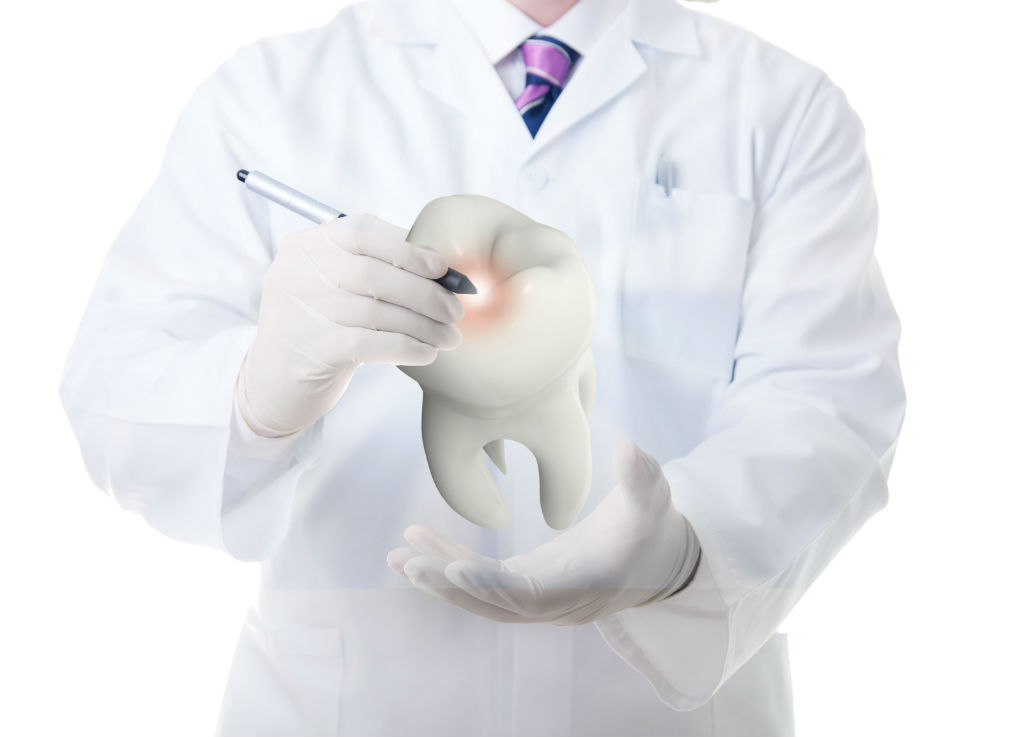Call: (510) 451-9100
Facts You Must Know

Differences between conventional dentures and immediate dentures?
Complete dentures are called "conventional" or "immediate" depending on the time they are made and when they are inserted into the mouth.
Immediate dentures are introduced immediately after the removal of the teeth. To accommodate this, the dentist takes measurements and makes the model of the patient's jaws during a preliminary visit.
A benefit of immediate dentures is that the patient does not have to be without teeth during the healing period. However, bones and gums can shrink over time, especially during the period of healing in the first six months after the removal of teeth. When gums shrink, immediate dentures may require rebasing or relining to fit properly. A conventional denture can then be made once the tissues have healed. Healing may take at least 6-8 weeks.
What is an overdenture?
An overdenture is a removable denture, which fits over a few of the remaining natural teeth or implants. The natural teeth need to be prepared to provide stability and support for the denture. Your dentist can verify if an overdenture would be suitable for you.
What will dentures feel like?
New dentures can feel awkward for a few weeks until the patient becomes accustomed to them. Dentures may feel loose while the muscles of your cheek and tongue are ‘trained’ to keep them in place.
It is not unusual to experience minor irritation or soreness caused from new dentures. Patients may find that their saliva may temporarily increase as well. As the mouth becomes comfortable to the dentures, these problems should diminish. Patients should schedule follow-up appointments with their dentist after a denture is inserted. If any problem persists, particularly irritation or soreness consult your dentist.
Fluoride and Fluoridation - Facts About Fluoride
Cavities used to be very common, but over the past few decades, tooth decay has been reduced dramatically thanks to fluoride. Studies have shown that fluoride reduces cavities in both children and adults and helps repair the early stages of tooth decay even before the decay is visible. Fluoride is a nutrient, which is safe and effective when used appropriately.
Fluoride is a mineral that naturally occurs in all water sources, even the oceans. The fluoride ion comes from the element fluorine. Fluorine, which is the 17th most abundant element in the earth's crust, is never encountered in its free state in nature. It exists only in combination with other elements as a fluoride compound.
Fluoride is effective in preventing and reversing the early signs of tooth decay. Research has shown there are several ways in which fluoride achieves its decay-preventive effects. It makes the tooth structure stronger, so teeth are more resistant to acid attacks. Fluoride also acts to repair, or re-mineralize, areas that acid attacks have begun. The effect of fluoride is important because it reverses the early decay process as well as creating a tooth surface that is more resistant to decay.
Fluoride is obtained in topical and systemic forms. Topical fluorides strengthen teeth making them more decay-resistant. Topical fluorides include toothpastes, mouth rinses and professionally applied fluoride therapies.
Systemic fluorides are ingested in the body and become important in forming tooth structure. Systemic fluorides can also give topical protection because fluoride is present in saliva, which continually coats the teeth. Systemic fluorides include water fluoridation or dietary fluoride supplements in the form of tablets, drops or lozenges.
Topical Fluorides

Self-Applied
Self-applied topical fluoride responsible for the significant drop in the level of cavities since 1960 is fluoride toothpaste. The American Dental Association recommends that children (over two years of age) and adults use fluoride toothpaste certified by the ADA Seal of Approval. Other sources of self-applied fluoride are mouth rinses, either prescribed by your dentist or an over-the-counter product. The ADA recommends the use of fluoride mouth rinses, but not for children under six years of age because they may swallow the rinse.
Professionally-Applied
Professionally applied fluorides come in the form of a gel, foam or rinse, and are applied by a dentist or hygienist during dental visits. These fluorides are more concentrated than the self-applied fluorides, and therefore are not required as frequently. The ADA recommends that dental professionals use any of the professional strength, tray-applied gels or foam products approved by the ADA. There are no ADA-accepted fluoride professional rinses for use in dental offices.
Systemic Fluorides
Systemic fluorides such as community water fluoridation and dietary fluoride supplements are effective in reducing tooth decay. These fluorides provide topical as well as systemic protection because fluoride is present in the saliva.
Community Water Fluoridation
Fluoride is present naturally in all water sources. Community water fluoridation, has been in affect for over 50 years, and is the process of adjusting the fluoride content of fluoride-deficient water to the recommended level for optimal dental health. The recommended level is 0.7 - 1.2 parts of fluoride per million parts water. Water fluoridation has been proven to reduce decay in both children and adults. While water fluoridation is an extremely effective and inexpensive means of obtaining the fluoride necessary for optimal tooth decay prevention, not everyone lives in a community with a centralized, public or private water source that can be fluoridated. If you do not have community fluoridated water, consult your dentist for alternative sources.
Dental Implants
Are there alternatives to tooth replacement besides a bridge?
Dental implants are a source of artificial teeth that look natural and feel secure. Dental implants can also be used to attach full or partial dentures. However, Implants are not an option for everyone, because implants require surgery. Patients need to be in good health, have healthy gums, and have adequate bone to support the implant. The patient must also be committed to meticulous oral hygiene and regular dental visits. If you are considering implants, a thorough examination by your dentist will help determine if you would be a good candidate.
What is involved in placing implants?
Surgery is performed to place an anchor. Surgery can take several hours, and up to six months can be required for the bone to grow around the anchor to firmly hold it in place. Some implants may require a second surgery in which a post is attached that connects the anchor to the replacement teeth. With other implants, the anchor and post are already attached and are positioned at the same time.
After the gums have had several weeks to heal, the artificial teeth are made and fitted to the post portion of the anchor. This step can take one to two months to complete, as several fittings may be required.
Implant surgery can be done either in a dental office or in a hospital, depending upon a number of factors. A local or general anesthetic can be used. Usually pain medications and, if necessary, antibiotics are prescribed. Your dentist will give you instructions on diet and oral hygiene.
Veneers
Veneers can easily correct gaps in your teeth or with teeth that are stained, badly shaped or crooked. Today a veneer placed on top of your teeth can correct nature's mistake or the results of an injury and help you obtain a beautiful smile.
Veneers are thin, custom-made shells crafted of tooth-colored materials designed to cover the front side of teeth. Typically veneers are designed by a dental technician, working from a model of the patient's teeth provided by your dentist.
Usually Veneers is an irreversible process, because it's necessary to remove a small amount of enamel from your teeth to accommodate the Veneer shell.
The dentist may recommend that you avoid some foods and beverages that can stain or discolor your veneers such as coffee, tea or red wine. Sometimes a veneer might chip or fracture, but for many people the results are more than worth it. To find out if Veneers are right for you, consult your dentist
Tooth Whitening
Everybody wants a bright white smile, and there are a variety of products and procedures available to help you improve the look of yours.
Many people are satisfied with the results they get from brushing twice daily with fluoride toothpaste, flossing between their teeth and regularly scheduled visits to their dentist’s office. If you decide you would like to go beyond the normal routine to make your smile look brighter, you should investigate all of your options.
Several approaches to whiten your smile include:
- In-office bleaching
- At-home bleaching
- Whitening toothpastes
Visit your dentist to learn more and find out which procedure is best for you.
Braces and Orthodontics

At what age can people have orthodontic treatment?
The biological process of moving teeth is the same at any age. Both children and adults can benefit from orthodontics. It is recommended that every child receive an orthodontic evaluation by age seven, as treatment can take a little longer for adults.
What causes orthodontic problems?
An orthodontic problem is called a malocclusion, which translates in common English to "bad bite." Some causes of malocclusion include: crowded teeth, extra teeth, missing teeth or jaws that are out of alignment.
Most malocclusions are inherited, although some can be acquired. Acquired malocclusions can be caused by accidents, early or late loss of baby teeth, or sucking of the thumb or fingers for a prolonged period of time.
How are orthodontic problems corrected?
First, pretreatment records are created which are important for the dentist to accurately diagnosis the patient. This includes medical/dental history, clinical examination, plaster study models of teeth, photos of your face and teeth and x-rays of your mouth and head. This information will be used to decide on the most effective treatment.
A custom treatment plan is outlined for each patient, defining the specific appliance treatment best suited to correct the patient's orthodontic problems. There are a variety of different orthodontic appliances that may be used.
When the orthodontic appliances are in place, this is considered the "active treatment" phase. Appliances are adjusted periodically to ensure the teeth are adjusted correctly and efficiently.
The length of Orthodontic treatment varies from person to person. An important determinant as to how long a patient wears braces depends on how well the patient cooperates during treatment — for example, by following instructions to wear rubber bands, head gear, etc.
After active treatment is complete, the "retention" phase begins. A patient will need to wear a retainer to ensure the teeth remain in their new positions. For severe orthodontic problems, surgery may be recommended.
Are there less noticeable braces?
Today's braces are for the most part, less noticeable than older versions. Brackets, the part of the braces that hold the wires, are bonded to the front of the teeth wires that are used for braces today are also less noticeable. These brackets can be metal, clear, or tooth-colored, making them more cosmetically appealing. In some cases, brackets may be put on the back of the teeth. Modern wires are made of sophisticated materials that exert gentle but steady, pressure on the teeth, making the tooth-moving process faster and more comfortable while being less noticeable than their predecessors.
How long will treatment take?
The normal treatment time is about 24 months, although this varies between patients. Usually, adult treatment takes a little longer than a child's treatment. Additional things to consider are the severity of the problem, the health of the teeth, gums and supporting bone and how closely the patient follows recommendations. While orthodontic treatment requires a time commitment, most people feel the benefits are well worth the time invested. Consult your dentist to learn more and see if braces are right for you.
